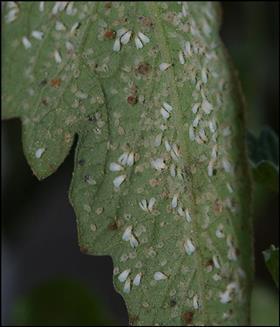
A lack of knowledge about biopesticides is leading to inefficient application by growers and reducing the success rates of integrated pest and disease management programmes (IPDM), according to the AHDB.
To make application of biopesticides more efficient and effective, growers need to be provided with independent advice on which biopesticides to use and how they should be applied under different circumstances, the body concluded.
Observation trials conducted throughout 2016 highlighted several opportunities to improve biopesticide performance through improved understanding of the optimum conditions required for each biopesticide to perform well.
These include the quantity of product used, quantity of water, location within the crop that should be targeted, and other environmental parameters that could influence performance.
The trials were conducted as part of AMBER, a five-year project funded by AHDB with the aim of identifying management practices that growers could use to improve the performance of biopesticide products within IPDM.
David Chandler, principal research fellow at the University of Warwick said: “It was clear from our observation trials that there was a lack of understanding about how biopesticide efficacy is affected by factors such as population sizes of pests and diseases, environmental factors such as exposure to UVA and UVB, and water volumes.
“More information needs to be given to growers on how to apply biopesticides in practical situations. This could be done through modifications to improve labeling.”
Joe Martin, crop protection senior scientist at AHDB added: “In a survey we conducted as part of AMBER, we found that growers perceived biopesticides to be unreliable, however we believe this could be in part as a result of incorrect applications.
“We need to make sure growers are provided with as much knowledge as possible about the optimum conditions required for good performance of each biopesticide in order to identify potential improvements in application.”
Biopesticides are plant protection products based on living microorganisms, plant or microbial extracts, or behaviour-modifying substances.
Within the next 20 years, the number of biopesticide products available is likely to exceed the number of conventional chemical pesticides, according to the AHDB.



